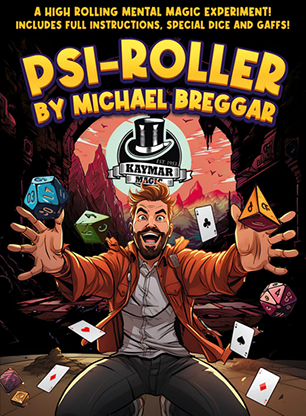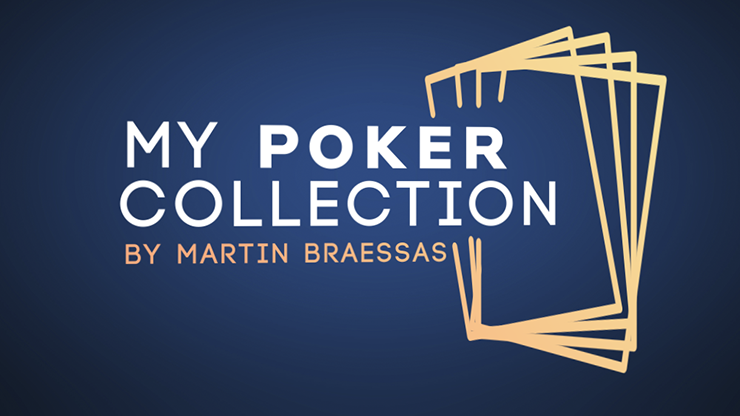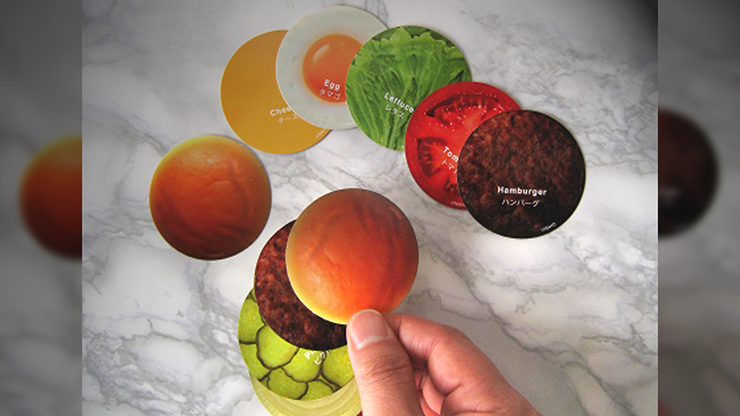Classic Innovations
Dave Chandler
(Based on 1 review)

"Dave Chandler visited my shop in Baltimore back in 2013 and performed for our monthly club meeting. Everyone was impressed! He performed his stage act which recently won him first place at the 2014 International Battle of Magicians.
He recently paid another visit to my shop and showed me some of his close up and walk around magic. Equally impressive!
This is some powerful and refreshing material. This is a very well produced 40 page booklet fully illustrated with great black and white photos. Every detail is covered and this is material that you WILL use.
Contents include:
*Bill in Sharpie Cap is an immediate must have effect
*Roy Walton Card Warp with a visual restoration at the end
*Static Fusion is a great giveaway of your business card wherein a coin fuses into your card.
*Cross Body Ditching Technique and Hip Sleeving Techniques
Twelve items in all in this booklet with excellent printing, great photos, professonally bound in vinyl covers.
I highly recommend this booklet." - Dennis Haney (Denny & Lee)
Available ONLY at Denny and Lee's (www.DennyMagic.com).
Reviews
(Top ▲)
Random I-Tunes Song of The Moment: Plump by Hole
Classic Innovations Reviewed
One Book, 39 pages, 12 "things" and $22 bucks. Is it gem or is it rubble? Stay tuned to find out.
Introduction/Disclaimer
Reviews like this are always tricky. Reviewing a book of effects . . .
First, as you know, I'm a firm believer that my opinion of the effect is irrelevant to the final star status of any product. That being the case, I typically don't like to spend too much time talking about effect. Usually you watch the trailer and you know what the effect is, but what about a book?
There is no trailer, so I have to kind of give you a rundown of the effects so that you, at the very least, know what the effects are. So you can decide if you like them or not. So, let's take a look at the effects briefly, then we'll dive into the methods a little bit more in depth.
Effect
This book, Dave Chandler's lecture notes, includes a dozen effects/ideas. Some are fully fleshed out routines. Others are ideas/ways to end a particular routine. For example, there's an ending to Roy Walton's Card Warp where you restore the torn pieces. It's a very clever idea that could be applied to any torn and restored card effect.
There's an endiing for a ring on string routine that leaves the spectator with a souvenir containing your contact info, and it's a "thing" that they'll keep and use. Then there are some moves. For example, there's a move for cleaning up after a vanish of a small object that leaves you completely clean. There's a clean up idea for the snap change, a top change alternative, a sleeving technique and a four Ace production.
There are also effects, such as Chandler's handling of the Everywhere and Nowhere plot, ACAAN, Bill in Sharpie Cap, a variation of a J.C. Wagner effect and a coin and business card routine.
So your first decision of the day is to decide if you like any of these style of effects. Next up, we'll discuss method viability.
Method
Everything methodwise is pretty much right out of the standard card handling or sleight of hand tool box. There are some moderate almost innovations. There's really nothing new here. I saw "almost" innovations because most of the stuff is sooooooooooo similar to existing stuff that it doesn't feel worthy of the term "innovation." There is one major exception, and one almost exception. The Card Warp ending is very innovative and very clever, and a visually powerful way to restore a torn card.
The sleeving idea, is very, very similar to what can be found on the subject in Bobo's Modern Coin Magic. It borders on innovative. The top change alternative is probably stepping over the line making its way into the realm of innovative. Something doesn't have to be revolutionary to be good. All of the methods are solid, doable and legitimate. The only methods that I felt was not "legit" were the Cross-body Ditch Technique and the clean up for the Snap Change. The ditch just felt a little bit overly contrived with a lot of back and forth movement that seems awkward ‐ that's how it reads, anyway. The Snap Change clean up may be legitimate, but it's hard to tell due to the way it's written up. You'll see in the Product Quality segment below.
Ad Copy Integrity
The ad copy really makes no claims that can or cannot be disputed. However, the title, Classic Innovations is a little bit misleading. As I mentioned earlier, I feel that the term "innovative" warrants a bit more than what I found in this book.
Product Quality
This is where things started to fall apart, both literally and figuratively. Just the simple act of turning the pages and flattening them out so that the book would stay opened caused the pages to become unbound and fall out of the book. Make it past that and you're in for one heck of a frustrating reading experience. There were several places where the instructions were wrong, confusing, or left out valuable information.
I have two and half pages of notes of problems. I'll bullet point them below, and you'll see "wrong", "confusing" and "missing" along the way. In addition to the page by page bullet point, I'll also mention a few problems that occurred regularly throughout the text.
One of the most common ones was the way the deck or a packet of cards was being referred to. Very often, it was unclear what was meant by "bottom" for example. Did it mean the back of the face up packet? Or did it mean the face of the face up packet. Sometimes it was clear, other times not so much. The problem was that the nomenclature kept changing. Generally, for clarity's sake, it's a good idea to stick with a way of looking at the cards (e.g., the back of a card is always the "top" or "back" of a deck, the face of a card is always the "bottom" of the deck or the "face" of the deck, etc.).
This was quite obviously missing throughout. Another common problem that plagued the pages of this publication was the "I don't know my left from right" problem. On more than one occasion "left hand" (or right hand) was written when "right hand" (or left hand) was meant. On a couple of occasions, the pictures didn't match the written text. And way too often it was assumed that you know a specific move, and no explanation of it was given.
Specifics? You asked for it. You got it:
Page 5
- Gets left and right hand mixed up in "phase 2"
- Gets left and right side of packet mixed up in "phase 3"
- Assumes you know what an Ascanio Spread is
- Photo Number two has the color of the Kings in the wrong position
Page 6
- Confusing front/back top/bottom nomenclature
- It is assumed that you know what an Erdnase Break is
Page 8
- Gets left and right side of a double wrong
Page 9
- Says "third" card, should be "fourth" card
- Impromptu version explanation won't always work as explained, more depth was needed to cover variations
Page 10
- Tells you to do a top change, but at this point in the routine, you don't have a card in your hand to be changed
- Left out a part where you are supposed to turn over a card
- Gets right and left pinkies confused
- The second paragraph is extremely confusing and very difficult to follow
- The whole method description is very confusing and difficult to understand
Page 13
- The description for the Wilson Palm Vanish is very confusing and hard to follow
- Gets 1st/2nd fingers confused with 2nd/3rd fingers
Page 14
- Tells you to revolve wrist clockwise . . . um . . . how do you do that?
Page 15
- Text says "right hand" — photo shows left hand
- Between photos 20 & 21, the deck trades which hand it's in which is contradictory to the written instructions
- During the clean up explanation it refers to "the card" — it's not clear which of the two cards are being referred to in mulitiple cases
- The handling write up is confusing, and based on how it's written, seems not invisible at all
Page 25
- Bottom/Face, Front/Back confusion
Page 27
- Phase two leaves out the description of the role of the right hand in the move making the description awkward and difficult to understand
Page 28
- Assumes you know what a Buckle Count is
- The second paragraph of phase 3 is very confusing
- The last paragraph assumes you know what a Flustration Count is
Page 29
- Says, " . . . perform the Buckle Count Display described above." It was not described above as claimed
- The last paragraph has a very confusing description of how to handle a Side Steal that is doesn't make any sense
Page 32
- Tells you to have the spectator hold the card, yet the instructions have you folding and tearing a card that is clearly supposed to be folded by the spectator, not you — according to the written instuctions.
There's more, but I think you get the point.
Final Thoughts
The tricky part about this product is that the effects are practical and doable . . . if you can figure out the instructions. This was one of the most frustrating reading experiences I've had in a long time. Yet, there are gems to be mined. If you can work your way through the frustratingly painfully written instructions, my guess is that you'll find some stuff that you'll appreciate. Oddly enough I didn't find any grammar or punctuation errors. There weren't any typos either, unless you consider saying "left" when you meant "right" a typo.
When you consider that the effects are mostly pretty standard effects (which an exception or two) and the fact that, for the most part, the methods were not overly innovative, the rating is stellar. But then when you add in the poor quality and extremely confusing and "messy" instructions, it's hard to give this a super great rating. I have a feeling, however, that many of you would feel the restoration move found in the Card Warp ending might be worth price, but I can't base my final rating on what you might feel.
Final Verdict:
2.5 Stars with a Stone Status of grubble. Some gems to be mined from a pile of rubble.









